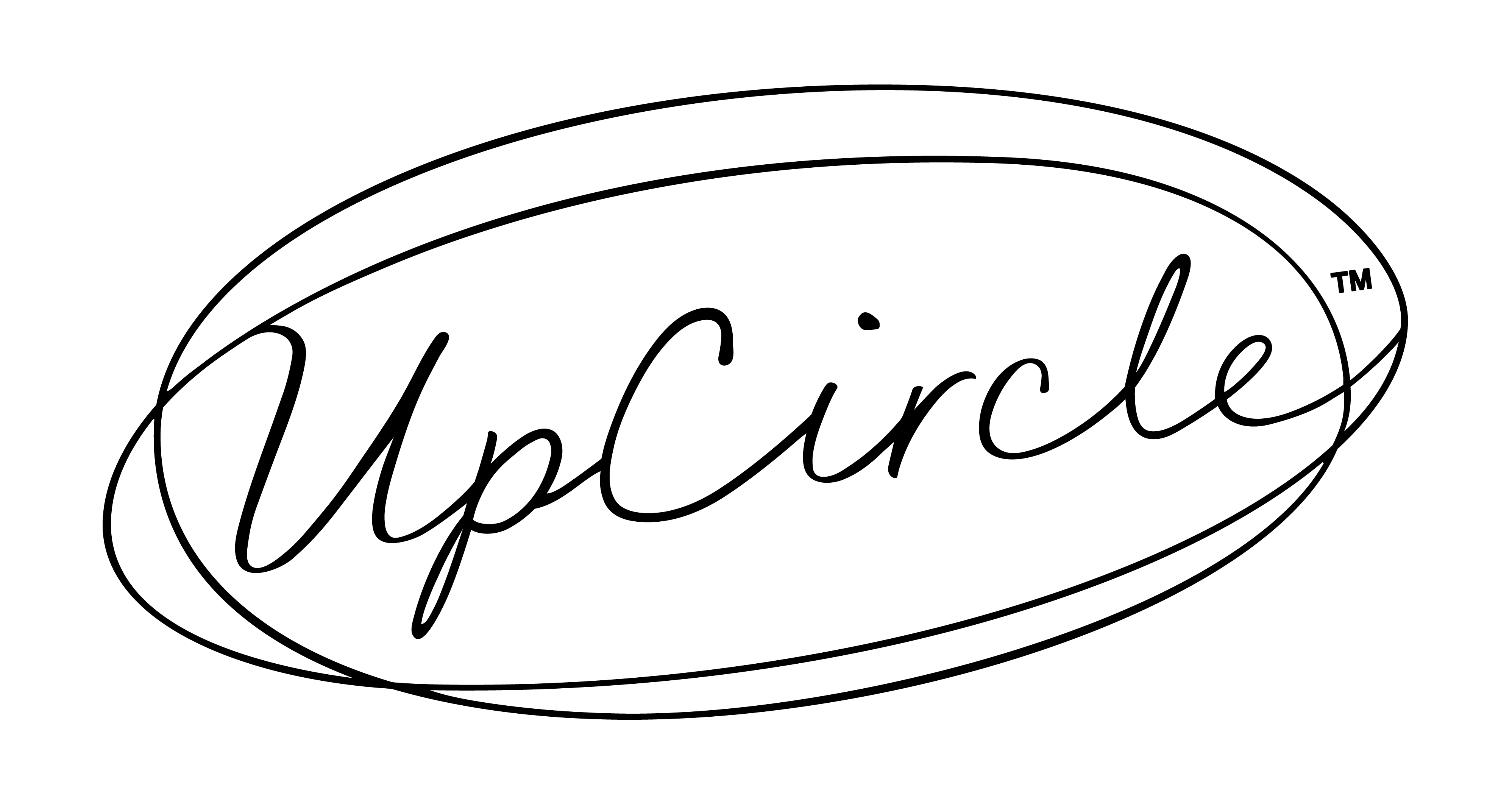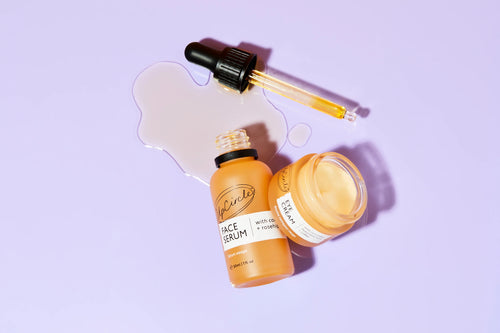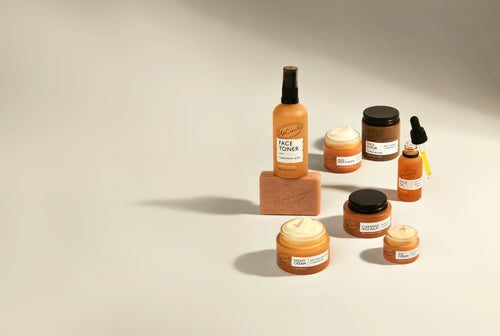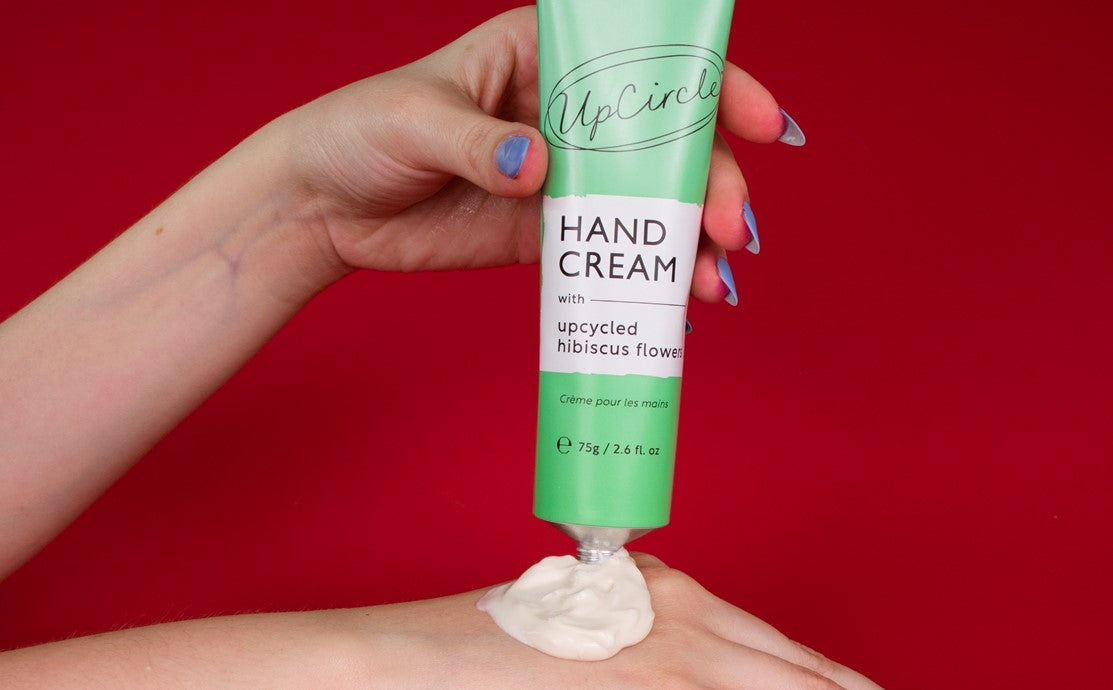Whether you have dull, dry, or sensitive skin, shea butter could be your skincare savior. It’s a natural skincare product that you often see listed on ingredients in skincare and beauty products.
Shea butter has been used in beauty treatments for decades – and with good reason. If you’ve seen shea butter listed on the ingredients of your skin products, then you may be curious to know what the main shea butter benefits for skin are and why it’s such a popular inclusion in skincare products.
At UpCircle, we want to sing the praises of this ‘wonder butter’ so we are sharing with you our ultimate guide to this natural fat that is derived from the kernels of the African shea tree.
Discover the many benefits of shea butter for skin and find out how it stacks up against other tried and tested beauty ingredients, such as coconut oil and cocoa butter.
Is shea butter good for skin?
It’s a resounding ‘yes’ from us! Shea butter is included in many moisturizers such as our hand cream which is formulated with 10% shea butter which exceeds industry standard of 1-2% making our hand cream extremely nourishing!.Shea butter acts as an emollient to soften and hydrate the skin. It’s great for moisturizing and has long been used as a natural moisturizer, much as coconut oil has been.
Thanks to its fatty acids (oleic, palmitic, and linoleic, in case you want the scientific scoop), shea butter can help to improve the skin’s natural barrier while protecting it from environmental aggressors such as pollution. Supporting your skin’s natural barrier is really important for modern living, and shea butter is one answer.
Shea butter also stimulates the production of collagen making it a ‘must-have’ ingredient for rejuvenating mature skin and reducing fine lines.
All in all, shea butter is definitely good for your skin, no matter what you’re looking for.
Shea butter for sensitive skin
Shea butter has anti-inflammatory properties, which can soothe and repair sensitive skin and reduce the effects of skin conditions such as psoriasis and eczema.
What’s more, shea butter absorbs quickly to give fast relief from flare-ups. Having a skincare product with shea butter to hand ensures that your skin is soothed, calmed and inflammation is reduced.
Does shea butter help dry skin?
As shea butter has emollient properties, the rich oils produced by the kernels will soak into dry skin leaving your complexion looking smoother, plumper and feeling softer.
If you are looking for an all-over body butter that rehydrates dry skin, then we recommend our natural body cream with date seeds, which combines nourishing shea butter, olive oil and linseed oil to provide an intense burst of hydration. Many UpCirclers with dry skin rave about the difference our natural body cream makes.
Is shea butter good for oily skin?
You’d be forgiven for thinking that adding fatty shea butter to skin that’s already oily would be a big beauty no-no. But, in fact, the opposite is true. Shea butter is good for oily skin too.
Shea butter can actually help to prevent the build-up of oil in the skin by balancing sebum production. By controlling excess sebum, oily skin will be less prone to clogged pores, acne breakouts and oiliness.
Cocoa butter vs shea butter
Both shea butter and cocoa butter are plant-based fats that nourish your skin. However, there are a couple of key differences that could help you decide which is best for you.
Shea butter is rich in vitamins A and E and is most commonly used to nourish dry or damaged skin and reduce uneven skin tone, while cocoa butter is great at preventing moisture loss by creating a protective skin barrier.
The other main difference is the fragrance – raw shea butter is deliciously smoky and nutty, while cocoa butter has an irresistible chocolate scent that is almost good enough to eat! Both are often used as natural emollients in skincare.
Should I choose coconut oil or shea butter for skin?
Shea butter and coconut oil are popular ways to naturally hydrate the skin, and both have their benefits. Coconut oil has antimicrobial properties, so it can be beneficial in treating fungal infections. While the anti-inflammatory properties of shea butter are better at calming other common skin conditions.
Shea butter wins out every time for those with acne-prone skin, as coconut oil can cause blocked pores. If you prefer to use coconut oil, remember that less is more.
To get the best of both worlds, treat your skin to a fragrant coffee body scrub that contains a balance of shea butter and coconut oil to gently buff away dead cells, revealing smoother skin.
What is raw shea butter?
Most shea butter used in cosmetics and skincare products has been refined, using high temperatures to extract the fat. Refined shea butter is usually white in color and odorless, and many of the properties that make shea butter so beneficial for the skin are lost in the processing.
Raw (or unrefined) shea butter has not been processed in any way and is a creamy color with a slightly nutty scent. We only use raw shea butter in our UpCircle skincare products, which means none of the antioxidants or hydrating properties are lost, giving you the maximum nourishment from your moisturizer. So when choosing shea butter skincare, make sure you know exactly what you are choosing.
How to use shea butter for skin
Moisturizers that contain shea butter should be applied as the last step in your skincare routine before you go to bed. The rich buttery goodness will work overnight to replenish lost moisture and boost collagen production.
Find your favorite shea butter skincare products
We believe that shea butter truly is a wonder ingredient. So if you’re ready to lavish your skin with some shea butter love, try our vegan skincare products that include raw shea butter.
Get started with our herbal blend coffee face scrub with raw shea butter and tea tree oil designed for acne-prone skin, or our floral-fragranced face scrub formulated with shea butter and chamomile to soothe sensitive skin.







